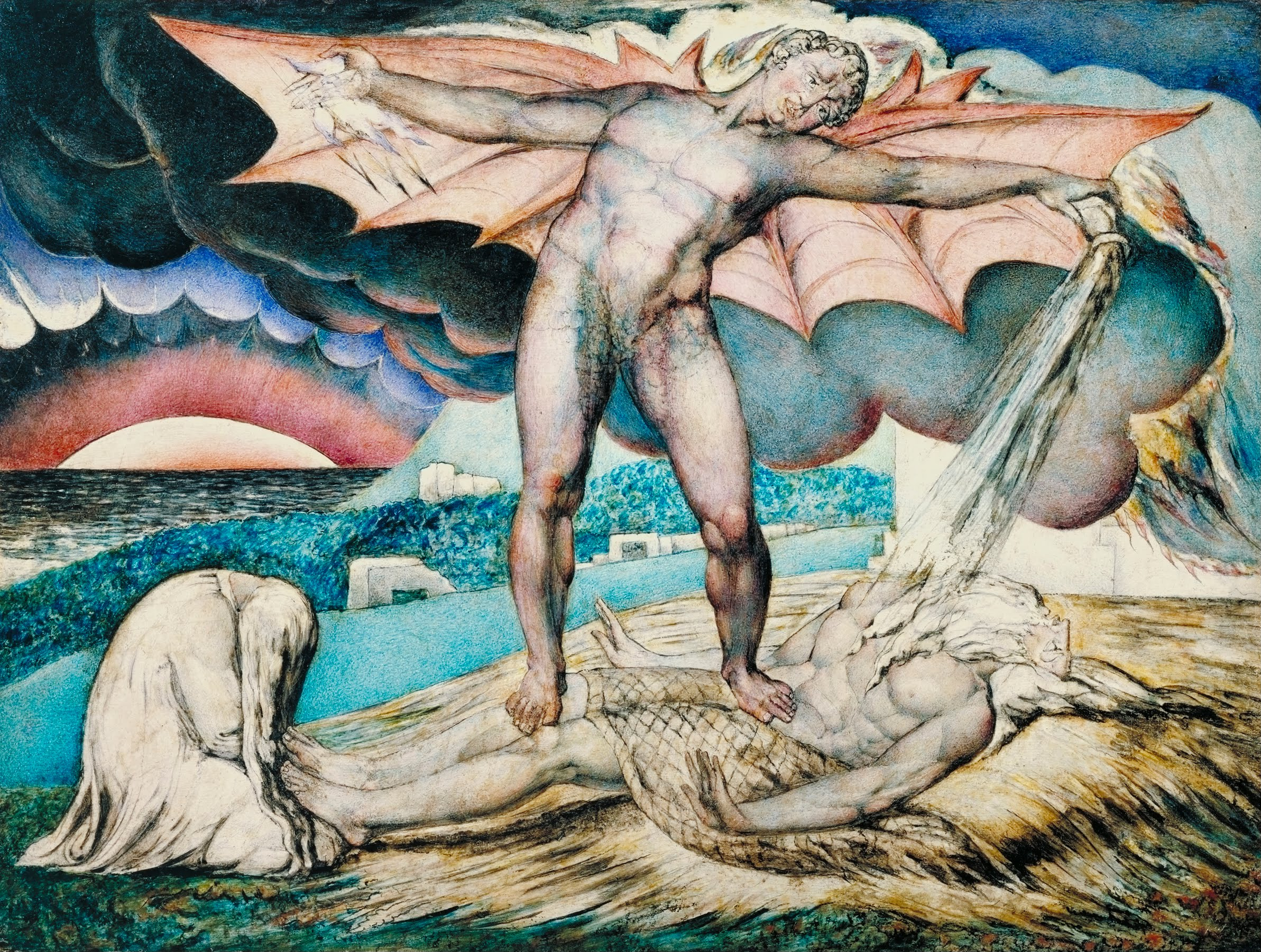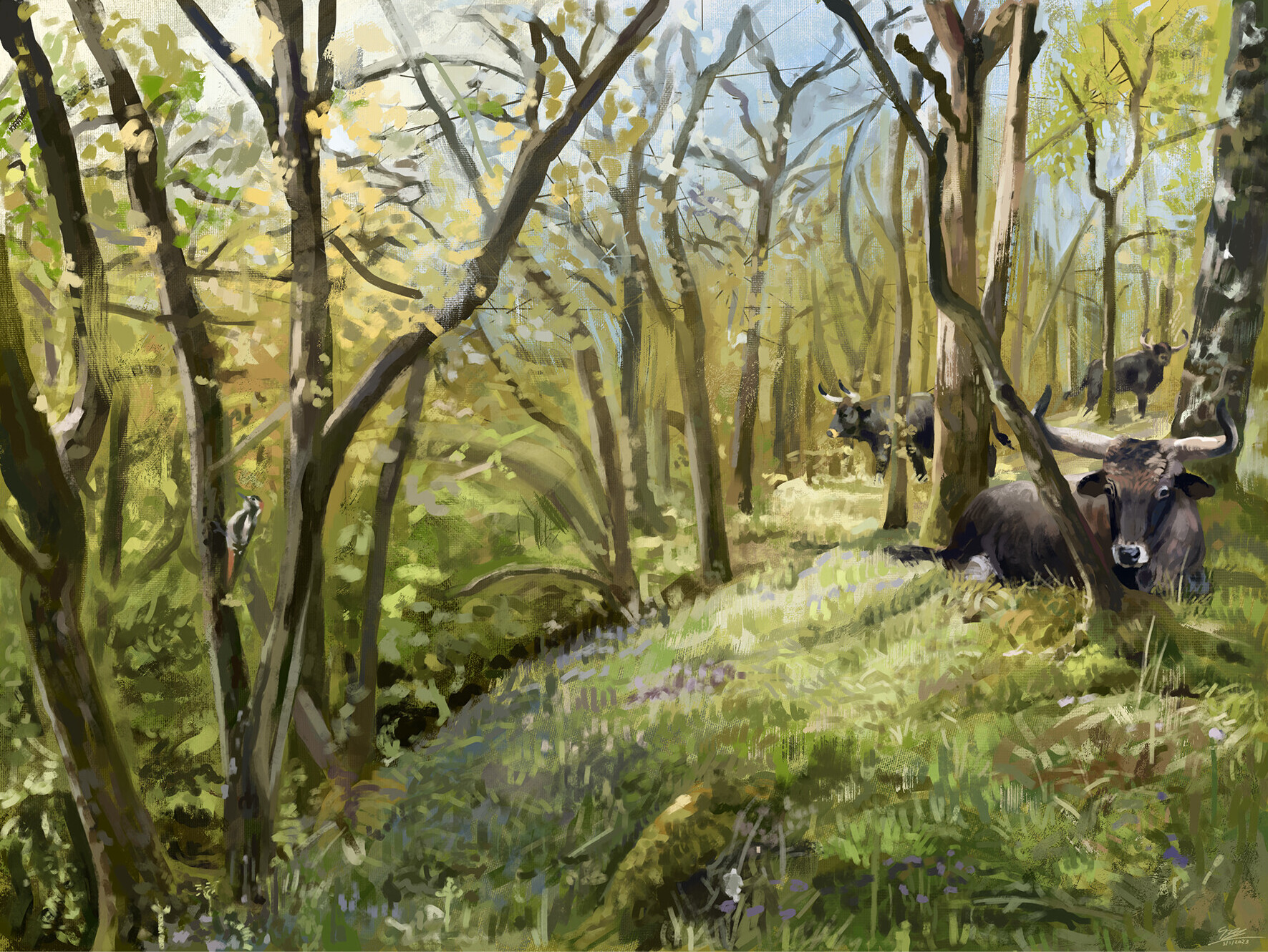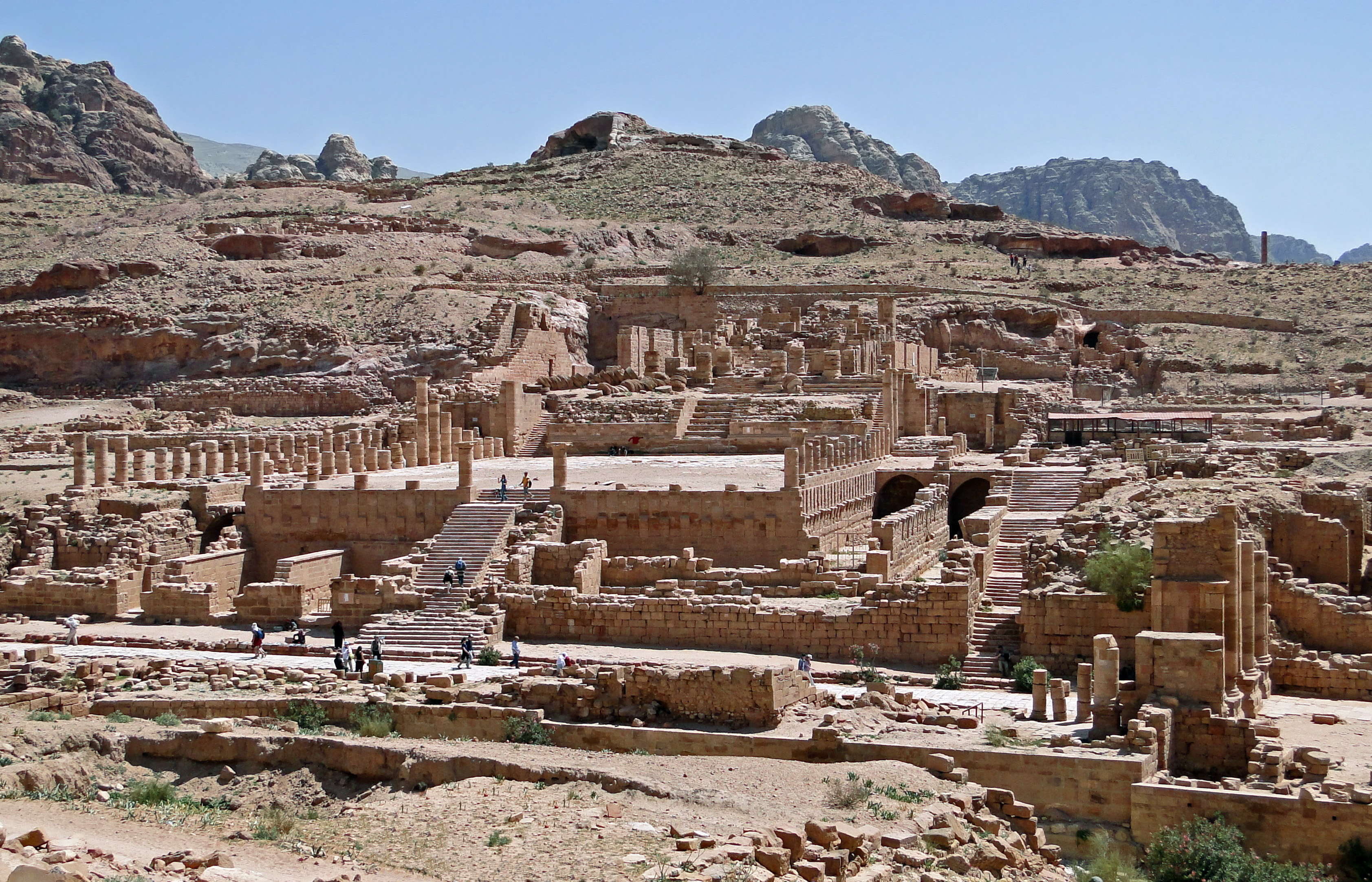|
Temanite
Teman (), was the name of an Edomite clan and of its eponym, according to the Hebrew Bible in Genesis 36:11–43. The term means "south" and was later applied to Yemen due to its location at the southern end of the Arabian Peninsula, so Yemenite Jews are called ''Temanim'' in Modern Hebrew. The Arabic name ''Yaman'' is from the same Semitic root. In Genesis 36:15, Teman is a son of Eliphaz, Esau's eldest son. Job's friend Eliphaz is descended from Teman in Job 2:11. In Kuntillet Ajrud inscription The Kuntillet Ajrud inscriptions in the Sinai Peninsula, dated to the 9th century BCE, use ''Tēmān'' as a place name. ''brktk lyhwh tmn wlʾšrth'' I bless you to Yahweh of Teman and his asherah It is unclear if "his asherah" refers directly to Asherah, the consort of Yahweh, or to the ritual items known as asherah poles. An image on Pithos A from the site shows a couple interpreted as Yahweh and Asherah with an female aurochs and calf on one side and a scribe on the other. Loca ... [...More Info...] [...Related Items...] OR: [Wikipedia] [Google] [Baidu] |
Edom
Edom (; Edomite language, Edomite: ; , lit.: "red"; Akkadian language, Akkadian: , ; Egyptian language, Ancient Egyptian: ) was an ancient kingdom that stretched across areas in the south of present-day Jordan and Israel. Edom and the Edomites appear in several written sources relating to the late Bronze Age and to the Iron Age in the History of the ancient Levant, Levant, including the list of the New Kingdom of Egypt, Egyptian pharaoh Seti I from c. 1215 BC as well as in the chronicle of a campaign by Ramesses III (r. 1186–1155 BC), and the Tanakh. Archaeological investigation has shown that the nation flourished between the 13th and the 8th centuries BC and was destroyed after a period of decline in the 6th century BC by the Neo-Babylonian Empire, Babylonians. After the fall of the kingdom of Edom, the Edomites were pushed westward towards southern Kingdom of Judah, Judah by nomadic tribes coming from the east; among them were the Nabataeans, who first appeared in the h ... [...More Info...] [...Related Items...] OR: [Wikipedia] [Google] [Baidu] |
Job 2
Job 2 is the second Chapters and verses of the Bible, chapter of the Book of Job in the Hebrew Bible or the Old Testament of the Christianity, Christian Bible.Holman Illustrated Bible Handbook. Holman Bible Publishers, Nashville, Tennessee. 2012. The book is anonymous; most scholars believe it was written around 6th century BCE. This chapter belongs to the prologue of the book,comprising Job 1:1–2:13. Text The original text is written in Biblical Hebrew, Hebrew language. Chapters and verses of the Bible, This chapter is divided into 13 verses. Textual witnesses Some early manuscripts containing the text of this chapter in Biblical Hebrew, Hebrew are of the Masoretic Text, which includes the Aleppo Codex (10th century), and Leningrad Codex, Codex Leningradensis (1008). There is also a translation into Koine Greek known as the Septuagint, made in the last few centuries BC; some extant ancient manuscripts of this version include Codex Vaticanus (B; \mathfrakB; 4th century), Cod ... [...More Info...] [...Related Items...] OR: [Wikipedia] [Google] [Baidu] |
Eliphaz (Job)
Eliphaz ( ''’Ělīp̄āz'', " El is pure gold") is called a Temanite (). He is one of the friends or comforters of Job in the Book of Job in the Hebrew Bible. The first of the three visitors to Job (), he was said to have come from Teman, an important city of Edom (; ). Thus Eliphaz appears as the representative of the wisdom of the Edomites, which, according to , , and , was famous in antiquity. As an alternative to the interpretation "El is pure gold", or "My God is pure gold", it has also been suggested that the name might mean something along the lines of "My God is separate" or "My God is remote". Name The name "Eliphaz" for the spokesman of Edomite wisdom may have been suggested to the author of Job by the tradition which gave the name Eliphaz to Esau's eldest son, the father of Teman (; ). Book of Job In the arguments that pass between Job and his friends, it is Eliphaz who opens each of the three series of discussions: *Chapters 4-5, with Job's reply in chapte ... [...More Info...] [...Related Items...] OR: [Wikipedia] [Google] [Baidu] |
Job (biblical Figure)
Job ( ''Īyyōv''; ''Iṓb'') is the central figure of the Book of Job in the Bible. In Islam, Job () is also considered a prophet. Job is presented as a good and prosperous family man who is suddenly beset with horrendous disasters that take away all he holds dear—a scenario intended to test Job's faith in God in Judaism, God. Struggling mightily to understand this situation, Job reflects on his despair but consistently remains devout. The language of the Book of Job, combining post-Babylonian Hebrew and Aramaic influences, indicates it was composed during the Persian period (540–330 BCE), with the poet using Biblical Hebrew, Hebrew in a learned, literary manner. In the Hebrew Book of Job The Hebrew Book of Job is part of Ketuvim ("Writings") of the Hebrew Bible. Not much is known about Job based on the Masoretic Text. The characters in the Book of Job consist of Job, Job's wife, his wife, his three friends (Bildad, Eliphaz (Job), Eliphaz, and Zophar), a man named E ... [...More Info...] [...Related Items...] OR: [Wikipedia] [Google] [Baidu] |
Scribe
A scribe is a person who serves as a professional copyist, especially one who made copies of manuscripts before the invention of Printing press, automatic printing. The work of scribes can involve copying manuscripts and other texts as well as secretarial and administrative duties such as the taking of dictation and keeping of business, judicial, and historical records for kings, nobility, nobles, temples, and City, cities. The profession of scribe first appears in Mesopotamia. Scribes contributed in fundamental ways to ancient and medieval cultures, including Ancient Egyptian literature, Egypt, Chinese culture#Calligraphy, China, Sanskrit#Writing system, India, Persian literature, Persia, the Roman Empire#Literacy, books, and education, Roman Empire, and Illuminated manuscript, medieval Europe. #Judaism, Judaism, Buddhism, and Islamic manuscripts, Islam have important scribal traditions. Scribes have been essential in these cultures for the preservation of legal codes, religiou ... [...More Info...] [...Related Items...] OR: [Wikipedia] [Google] [Baidu] |
Asherah Pole
An Asherah pole is a sacred tree or pole that stood near Canaanite religious locations to honor the goddess Asherah. The relation of the literary references to an ''asherah'' and archaeological finds of Judaean pillar-figurines has engendered a literature of debate. The asherim were also cult objects related to the worship of Asherah, the consort of either Ba'al or, as inscriptions from Kuntillet ‘Ajrud and Khirbet el-Qom attest, Yahweh, and thus objects of contention among competing cults. Most English translations of the Hebrew Bible translate the Hebrew words ( ) or ( ) to "Asherah poles". References from the Hebrew Bible Asherim are mentioned in the Hebrew Bible in the books of Exodus, Deuteronomy, Judges, the Books of Kings, the second Book of Chronicles, and the books of Isaiah, Jeremiah, and Micah. The term often appears as merely , () referred to as "groves" in the King James Version, which follows the Septuagint rendering as (''alsos''), pl. (''alsē'') and ... [...More Info...] [...Related Items...] OR: [Wikipedia] [Google] [Baidu] |
Pithos
Pithos (, , plural: ' ) is the Greek name of a large storage container. The term in English is applied to such containers used among the civilizations that bordered the Mediterranean Sea in the Neolithic, the Bronze Age and the succeeding Iron Age. Pithoi were used for bulk storage, primarily for fluids and grains; they were comparable to the drums, barrels and casks of recent times. The name was different in other languages; for instance, the Hittites used ''harsi-''. Secondarily, discarded pithoi found other uses. Like the ceramic bathtubs of some periods, the size of a pithos made it a convenient coffin. In Middle Helladic burials in Mycenae and Crete, sometimes the bones of the interred were placed in pithoi. The ancient Iberian culture of El Argar used pithoi for coffins in its B phase (1500–1300 BC). The external shape and materials were approximately the same: a ceramic jar about as high as a man, a base for standing, sides nearly straight or generously curved, and ... [...More Info...] [...Related Items...] OR: [Wikipedia] [Google] [Baidu] |
Aurochs
The aurochs (''Bos primigenius''; or ; pl.: aurochs or aurochsen) is an extinct species of Bovini, bovine, considered to be the wild ancestor of modern domestic cattle. With a shoulder height of up to in bulls and in cows, it was one of the largest herbivores in the Holocene; it had massive elongated and broad horns that reached in length. The aurochs was part of the Pleistocene megafauna. It probably evolved in Asia and migrated west and north during warm interglacial periods. The oldest-known aurochs fossils date to the Middle Pleistocene. The species had an expansive range spanning from Western Europe and North Africa to the Indian subcontinent and East Asia. The distribution of the aurochs progressively contracted during the Holocene due to habitat loss and hunting, with the last known individual dying in the Jaktorów forest in Poland in 1627. There is a long history of interaction between aurochs and humans, including archaic hominins like Neanderthals. The aurochs ... [...More Info...] [...Related Items...] OR: [Wikipedia] [Google] [Baidu] |
Eusebius
Eusebius of Caesarea (30 May AD 339), also known as Eusebius Pamphilius, was a historian of Christianity, exegete, and Christian polemicist from the Roman province of Syria Palaestina. In about AD 314 he became the bishop of Caesarea Maritima. Together with Pamphilus, Eusebius was a scholar of the biblical canon and is regarded as one of the most learned Christians during late antiquity. He wrote the ''Demonstrations of the Gospel'', '' Preparations for the Gospel'' and ''On Discrepancies between the Gospels'', studies of the biblical text. His work '' Onomasticon'' is an early geographical lexicon of places in the Holy Land mentioned in the Bible. As "Father of Church History" (not to be confused with the title of Church Father), he produced the ''Ecclesiastical History'', ''On the Life of Pamphilus'', the ''Chronicle'' and ''On the Martyrs''. He also produced a biographical work on Constantine the Great, the first Christian Roman emperor, who was ''Augustus'' between A ... [...More Info...] [...Related Items...] OR: [Wikipedia] [Google] [Baidu] |
9th Century BCE
The 9th century BC started the first day of 900 BC and ended the last day of 801 BC. It was a period of great change for several civilizations. In Africa, Carthage is founded by the Phoenicians. In Egypt, a severe flood covers the floor of Luxor temple, and years later, a civil war starts. It is the beginning of the Iron Age in Central Europe, with the spread of the Proto-Celtic Hallstatt culture, and the Proto-Celtic language. The major Olmec site of San Lorenzo Tenochtitlán in Mesoamerica declined in importance, after having been active since 15th century BC. Events 890s BC * 899 BC: The first year of King Yih of Zhou's reign is marked by a solar eclipse. * 892 BC: Megacles, King of Athens, dies after a reign of 30 years and is succeeded by his son Diognetus. *892 BC: King Xiao of Zhou overthrows King Yih of Zhou and takes the throne. * 891 BC: Tukulti-Ninurta II succeeds his father Adad-nirari II as king of Assyria. * 890 BC: Napoli some reports and excavations about th ... [...More Info...] [...Related Items...] OR: [Wikipedia] [Google] [Baidu] |
Onomasticon (Eusebius)
The ''Onomasticon'' (, ), more fully ''On the Place Names in the Holy Scripture'' (, ), is a gazetteer of historical and then-current place names in Palestine and Transjordan compiled by Eusebius (c. AD 260/265–339), bishop of Caesarea, and traditionally dated to sometime before 324. The ''Onomasticon'' sits uneasily between the ancient genres of geography and lexicography, taking elements from both but serving as a member of neither. It is widely considered the most important book for the study of Palestine in the Roman period. Its influence can be detected both in the Madaba map and the accounts of early Christian pilgrims, and it most probably contributed to the Christian pilgrimage of the 4th century, constructing " The Holy Land" as a unifying idea for Christians. Even so, it appears that the Onomasticon was not meant to be a guide for pilgrims, as it did not mention places to be venerated, rather, its target audience was biblical scholars and the composition was ... [...More Info...] [...Related Items...] OR: [Wikipedia] [Google] [Baidu] |
Petra
Petra (; "Rock"), originally known to its inhabitants as Raqmu (Nabataean Aramaic, Nabataean: or , *''Raqēmō''), is an ancient city and archaeological site in southern Jordan. Famous for its rock-cut architecture and water conduit systems, Petra is also called the "Rose City" because of the colour of the sandstone from which it is carved. The city is one of the New 7 Wonders of the World and a UNESCO World Heritage Site. The area around Petra has been inhabited from as early as 7000 BC, and was settled by the Nabataeans, a nomadic Arab people, in the 4th century BC. Petra would later become the capital city of the Nabataean Kingdom in the second century BC. The Nabataeans invested in Petra's proximity to the incense trade routes by establishing it as a major regional trading hub, which gained them considerable revenue. Unlike their enemies, the Nabataeans were accustomed to living in the barren deserts and thus were able to defend their kingdom. They were particularly sk ... [...More Info...] [...Related Items...] OR: [Wikipedia] [Google] [Baidu] |








